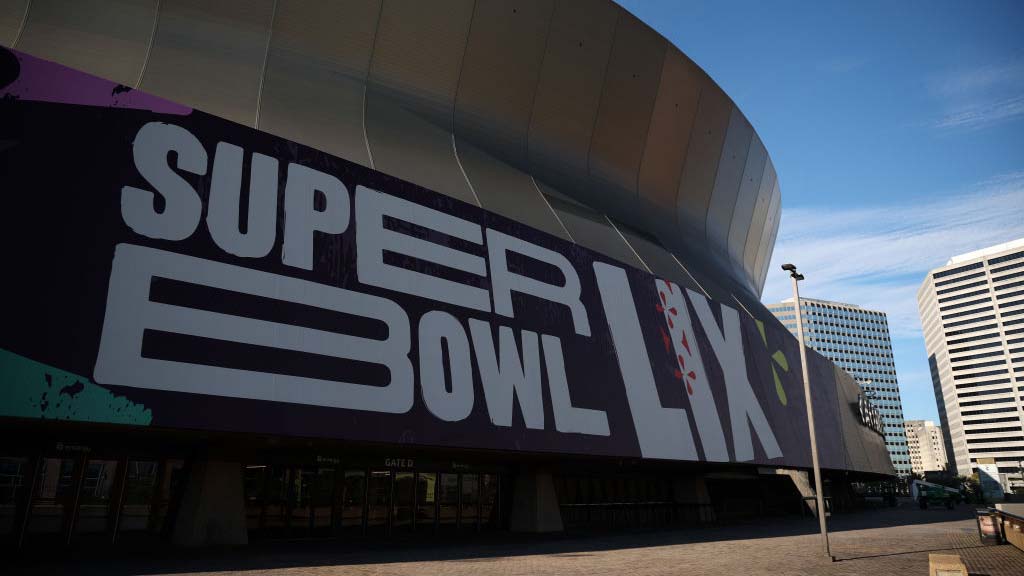The Super Bowl and the Content Continuum: How Major Sports Events Are Evolving in the Streaming Era
The value of sports media is no longer confined to a single, linear broadcast.

The Super Bowl has long been one of the last bastions of appointment television—an event that still commands mass live viewership in an era where traditional broadcast audiences are fragmenting. Yet, as new research from AdTaxi suggests, the way fans engage with the game is rapidly evolving, the survey finding that nearly 70% of the audience now utilize secondary media to interact with Super Bowl-related content and streaming platforms are now on par with traditional TV as a primary viewing method.

These shifts underscore a larger transformation in how sports content is consumed, moving us firmly into a new era of the content continuum—a seamless blend of live, linear, on-demand, social, and interactive experiences. The shift we are seeing with the Super Bowl exemplifies a broader transformation in how audiences, particularly younger generations, engage with major live events. This shift is not confined to sports—it extends to award ceremonies and other significant broadcasts, reflecting a fundamental change in content consumption patterns.
The Expanding Super Bowl Experience
The Super Bowl is no longer just about the game. It’s about the total experience, from pre-game hype and player interviews to real-time social media commentary and post-game analysis. Fans expect content that extends beyond the live broadcast, with bite-sized, on-demand clips and interactive digital engagement becoming just as crucial as the event itself.
The Super Bowl is no longer just about the game. It’s about the total experience, from pre-game hype and player interviews to real-time social media commentary and post-game analysis.
The AdTaxi data reflects this: With 77% of respondents indicating they will watch, listen, or follow the event, half will “tune in” using digital video (connected TV or streaming services)—exceeding traditional cable and broadcast TV’s combined 32% share of the total audience. This is the content continuum in action—where the value of sports media is no longer confined to a single, linear broadcast.
The Broader shift in Viewer Behavior
The 2025 Super Bowl reflect a wider trend in sports, as younger viewers – especially those from Generation Z— exhibit distinct media consumption habits that differ from previous generations. They favor short-form, on-demand content and interactive experiences over traditional, linear broadcasts. This preference has led to the rise of the "clip culture," where highlights, behind-the-scenes footage, and personalized content are highly valued.
This trend is evident as many younger fans prefer watching highlights over full games, according to data from a YouGov Sports Whitepaper. The study showed that a 34% of engaged global sports fans aged 18 to 24 prefer watching clips or highlights to watching live games in their entirety, while 14% follow games on social media.
Unlocking New Revenue and Engagement Opportunities|
For rightsholders, the growing shift toward streaming, social media, and on-demand platforms presents both challenges and opportunities. Traditional broadcast models, which rely on high-value live rights, must now incorporate a multi-platform approach that extends the lifecycle of content.
By leveraging cloud-based production and AI tools, rightsholders can create and distribute real-time game clips, social media highlights, behind-the-scenes footage, and interactive live streams – ensuring that sports coverage is not just an event, but an ongoing, interactive narrative.
In embracing the content continuum, organizers extend the lifecycle of their sports events, encompassing pre-game build-up, live interactions during the event, and post-event highlights and analyses. This approach not only caters to the viewing preferences of younger audiences but also creates additional opportunities for engagement and further monetization.
The Cloud-Powered Future of Sports Media
The acceleration of cloud-based production workflows is one of the biggest enablers of this new media landscape. Where traditional production methods required hours to repackage live content into highlights and clips, cloud technology and AI-driven editing can do this in near real-time. The ability to instantly publish key plays, social media-friendly snippets, and interactive features across platforms ensures that rightsholders remain relevant in an environment where immediacy is everything.
For leagues, broadcasters, and digital platforms, this is a wake-up call: the future of live sports is not just about securing high-value rights—it’s about maximizing the value of every moment within the content continuum.
Embracing the New Playbook
As the Super Bowl demonstrates, the days of a single-screen, one-way viewing experience are fading into the past. Sports fans now demand multi-platform, interactive, and always-on content, and rightsholders must adapt to remain competitive. The winners in this space will be those who rethink their content strategies, embrace real-time production tools, and recognize that the game doesn’t end when the final whistle blows—it lives on in every clip, post, and conversation that follows.
This is the new era of sports content consumption. The question is: are rightsholders ready to play?
The Super Bowl is no longer just about the game. It’s about the total experience, from pre-game hype and player interviews to real-time social media commentary and post-game analysis. Fans expect content that extends beyond the live broadcast, with bite-sized, on-demand clips and interactive digital engagement becoming just as crucial as the event itself.
The AdTaxi data reflects this: With 77% of respondents indicating they will watch, listen, or follow the event, half will “tune in” using digital video (connected TV or streaming services)—exceeding traditional cable and broadcast TV’s combined 32% share of the total audience. This is the content continuum in action—where the value of sports media is no longer confined to a single, linear broadcast.
The Broader shift in Viewer Behavior
The 2025 Super Bowl reflect a wider trend in sports, as younger viewers – especially those from Generation Z— exhibit distinct media consumption habits that differ from previous generations. They favor short-form, on-demand content and interactive experiences over traditional, linear broadcasts. This preference has led to the rise of the "clip culture," where highlights, behind-the-scenes footage, and personalized content are highly valued.
This trend is evident as many younger fans prefer watching highlights over full games, according to data from a YouGov Sports Whitepaper. The study showed that a 34% of engaged global sports fans aged 18 to 24 prefer watching clips or highlights to watching live games in their entirety, while 14% follow games on social media.
Unlocking New Revenue and Engagement Opportunities|
For rightsholders, the growing shift toward streaming, social media, and on-demand platforms presents both challenges and opportunities. Traditional broadcast models, which rely on high-value live rights, must now incorporate a multi-platform approach that extends the lifecycle of content.
By leveraging cloud-based production and AI tools, rightsholders can create and distribute real-time game clips, social media highlights, behind-the-scenes footage, and interactive live streams – ensuring that sports coverage is not just an event, but an ongoing, interactive narrative.
In embracing the content continuum, organizers extend the lifecycle of their sports events, encompassing pre-game build-up, live interactions during the event, and post-event highlights and analyses. This approach not only caters to the viewing preferences of younger audiences but also creates additional opportunities for engagement and further monetization.
The Cloud-Powered Future of Sports Media
The acceleration of cloud-based production workflows is one of the biggest enablers of this new media landscape. Where traditional production methods required hours to repackage live content into highlights and clips, cloud technology and AI-driven editing can do this in near real-time.
The ability to instantly publish key plays, social media-friendly snippets, and interactive features across platforms ensures that rightsholders remain relevant in an environment where immediacy is everything.
For leagues, broadcasters, and digital platforms, this is a wake-up call: the future of live sports is not just about securing high-value rights—it’s about maximizing the value of every moment within the content continuum.
Embracing the New Playbook
As the Super Bowl demonstrates, the days of a single-screen, one-way viewing experience are fading into the past. Sports fans now demand multi-platform, interactive, and always-on content, and rightsholders must adapt to remain competitive.
The winners in this space will be those who rethink their content strategies, embrace real-time production tools, and recognize that the game doesn’t end when the final whistle blows—it lives on in every clip, post, and conversation that follows.
This is the new era of sports content consumption. The question is: are rightsholders ready to play?
Get the TV Tech Newsletter
The professional video industry's #1 source for news, trends and product and tech information. Sign up below.
Robert Szabo – Rowe is the Head of Engineering and Product Management at Tata Comms Media.

